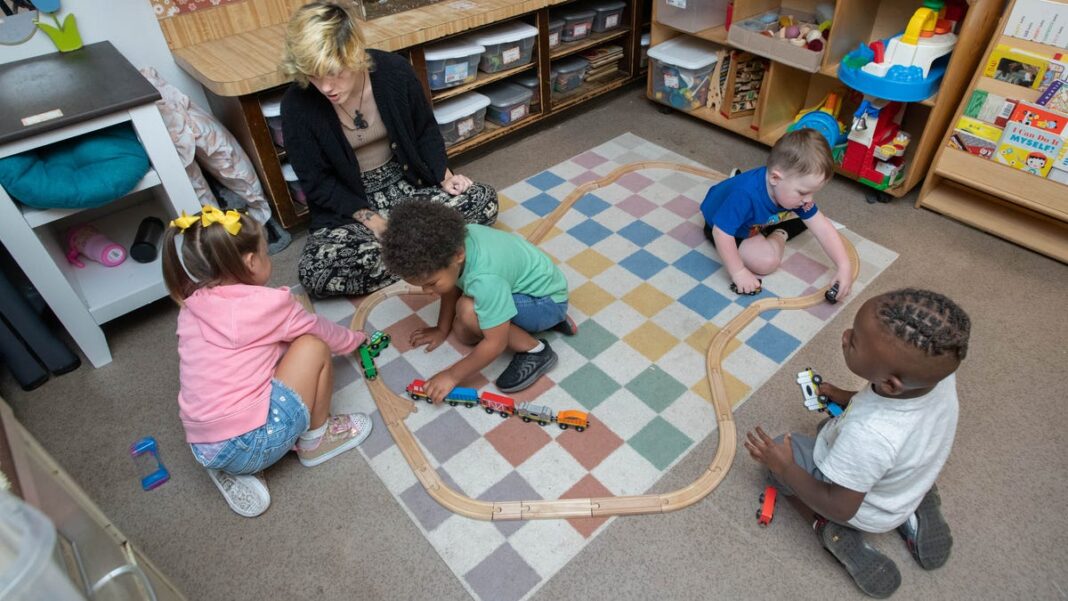Opinion: Rising child care costs have deepened the wage gap. Women in their 30s are suffering the most.
This child care crisis affects everyone, including dads, but the financial burden is primarily on mothers.
Recently, the U.S. Census Bureau revealed a startling statistic: The gender wage gap has widened for the first time in 20 years, with women earning only 83 cents for every dollar a man makes.
This is frustrating. However, for many mothers, it’s not a surprise. In this country, juggling work and family life is incredibly challenging, and the latest data highlights that women are bearing the brunt of it. With child care costs continuing to rise, women are falling further behind.
Statistically, there’s no valid reason why women should earn less than men. Girls are more likely to complete high school and to earn bachelor’s degrees.
Moreover, more women enroll in law and medical schools, and there’s been a notable increase in women pursuing MBA degrees.
Interestingly, women earn almost equal to their male counterparts—at least when they first start their careers. Women between their late 20s and early 30s typically earn about 90 cents for every dollar that newly graduated men make.
However, once women reach their mid-30s, the situation shifts. The wage gap expands. This change coincides with the period when many women are likely to be raising children. They face tough decisions in balancing job responsibilities and family needs.
The motherhood penalty is worsening
As the founder of Moms First, I’ve heard countless stories from women who face these challenges. Some moms reduce their work hours to manage school pickups. Others take lower-paying jobs with more flexible schedules, or, in some cases, they leave the workforce completely since the cost of child care exceeds their earnings.
It’s important to recognize that we are discussing mothers here. When women already earn less than men (and Black and Hispanic women earn significantly less), stepping back from their careers may seem like the most rational choice, even if it isn’t their desired path.
This creates a continuous cycle where wage disparities lead to even greater inequalities, keeping women from accessing vital economic opportunities.
Meanwhile, while women face a motherhood penalty, men benefit from a fatherhood premium—working more and reaping greater rewards than men without children.
Nobel Prize winner Claudia Goldin noted, “Women often step back, and the men in their lives step forward” in her groundbreaking research on the wage gap.
However, it’s crucial to understand that the choice to step back from the workforce can feel like no choice at all. If there’s no family support and child care costs more than housing, what alternatives do mothers have?
Child care costs must be a top issue in upcoming elections
The situation is only set to worsen.
Moms are overwhelmed—evident from the advisory issued by the U.S. surgeon general regarding the current threats to parents’ mental health. In the workplace, diversity, equity, and inclusion programs face challenges, hindering women’s chances for success.
After years of painfully slow advances in closing the wage gap, we seem to be regressing. The thought of falling even further is daunting. The answer is glaringly clear: If the high costs of child care are impeding women’s progress, we need to prioritize making child care both affordable and accessible.
Businesses have a crucial role to play. Providing child care benefits can transform situations for mothers and benefits everyone involved. Such offerings are not just an expense; they yield a strong return on investment. If any other investment promised such benefits, it would be an obvious choice.
As we head into a critical election year, we must urge our representatives to take meaningful action regarding child care. Proposals like expanding the child tax credit, placing caps on child care costs to 7% of families’ income, and ensuring caregivers receive a living wage are significant strides forward. It’s essential that our leaders continue to prioritize these initiatives.
We should seize every chance to question our candidates about their plans to address the child care crisis and hold them accountable for their commitments when voting.
When I started the Moms First initiative, many people wondered: Why focus solely on mothers instead of all parents? Here’s the reason.
Indeed, the child care crisis affects everyone, including fathers. However, it is mothers who are facing the brunt of this issue, quite literally. We need to bring about change ‒ not only for the well-being of our children and families but also for our own benefit and the future that lies ahead.
Reshma Saujani is a prominent activist and the founder and CEO of Moms First, as well as Girls Who Code.

